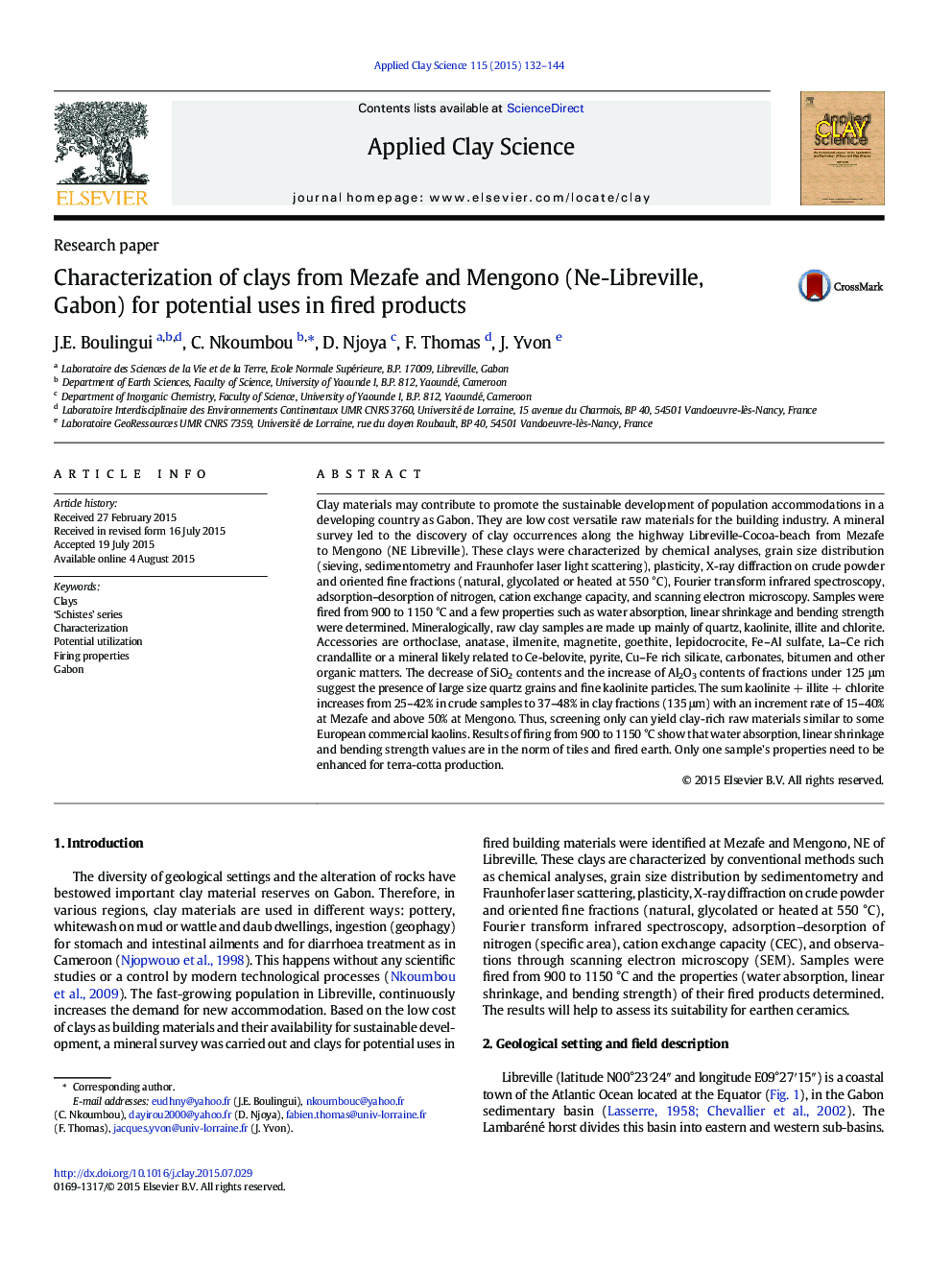| کد مقاله | کد نشریه | سال انتشار | مقاله انگلیسی | نسخه تمام متن |
|---|---|---|---|---|
| 1694327 | 1519066 | 2015 | 13 صفحه PDF | دانلود رایگان |

• Study of clays from sedimentary series from Gabon, raw materials for sustainable development
• Characterization of kaolinite- and illite-rich materials
• Comparison with a few European commercial kaolinite-rich clays
• Firing experiments and properties of fired products
Clay materials may contribute to promote the sustainable development of population accommodations in a developing country as Gabon. They are low cost versatile raw materials for the building industry. A mineral survey led to the discovery of clay occurrences along the highway Libreville-Cocoa-beach from Mezafe to Mengono (NE Libreville). These clays were characterized by chemical analyses, grain size distribution (sieving, sedimentometry and Fraunhofer laser light scattering), plasticity, X-ray diffraction on crude powder and oriented fine fractions (natural, glycolated or heated at 550 °C), Fourier transform infrared spectroscopy, adsorption–desorption of nitrogen, cation exchange capacity, and scanning electron microscopy. Samples were fired from 900 to 1150 °C and a few properties such as water absorption, linear shrinkage and bending strength were determined. Mineralogically, raw clay samples are made up mainly of quartz, kaolinite, illite and chlorite. Accessories are orthoclase, anatase, ilmenite, magnetite, goethite, lepidocrocite, Fe–Al sulfate, La–Ce rich crandallite or a mineral likely related to Ce-belovite, pyrite, Cu–Fe rich silicate, carbonates, bitumen and other organic matters. The decrease of SiO2 contents and the increase of Al2O3 contents of fractions under 125 μm suggest the presence of large size quartz grains and fine kaolinite particles. The sum kaolinite + illite + chlorite increases from 25–42% in crude samples to 37–48% in clay fractions (135 μm) with an increment rate of 15–40% at Mezafe and above 50% at Mengono. Thus, screening only can yield clay-rich raw materials similar to some European commercial kaolins. Results of firing from 900 to 1150 °C show that water absorption, linear shrinkage and bending strength values are in the norm of tiles and fired earth. Only one sample's properties need to be enhanced for terra-cotta production.
Journal: Applied Clay Science - Volume 115, October 2015, Pages 132–144